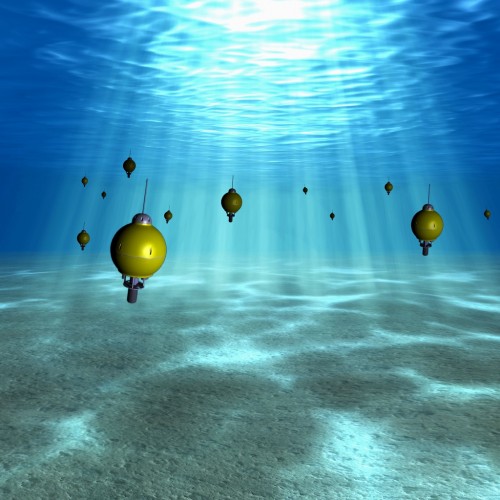I love robots, especially the kind that do science (not so much the kind that rise up to throw off their human overlords). Which is why I was happy to see that robots are being used to do some very interesting science. In an effort to plug gaps in knowledge about key ocean processes, the National Science Foundation (NSF)’s division of ocean sciences has awarded nearly $1 million to scientists at the Scripps Institution of Oceanography in La Jolla, Calif. The Scripps marine scientists will develop a new breed of ocean-probing instruments. Jules Jaffe and Peter Franks will spearhead an effort to design and deploy autonomous underwater explorers, or AUEs. AUEs will trace the fine details of oceanographic processes vital to tiny marine inhabitants. In other words, tiny robots, doing science, deep underwater, awesome.
While oceanographers have been skilled in detailing large-scale ocean processes, a need has emerged to zero in on functions unfolding at smaller scales. By defining localized currents, temperature, salinity, pressure and biological properties, AUEs will offer new and valuable information about a range of ocean phenomena.
“We’re seeing great success in the global use of ocean profiling floats to document large-scale circulation patterns and other physical and chemical attributes of the deep and open seas,” said Phillip Taylor of NSF’s division of ocean sciences. “These innovative AUEs will allow researchers to sample the environments of coastal regions as well, and to better understand how small organisms operate in the complex surroundings of the oceans.”
The miniature robots will aid in obtaining information needed for developing marine protected areas, determining critical nursery habitats for fish and other animals, tracking harmful algae blooms, and monitoring oil spills.
For marine protected areas, AUEs will help inform debates about the best areas for habitat protection. With harmful algal blooms and oil spills, the instruments can be deployed directly into outbreak patches to gauge how they develop and change over time. In the case of an airplane crash over the ocean, AUEs should be able to track currents to determine where among the wreckage a black box may be located.
“AUEs will fill in gaps between existing marine technologies,” said Jaffe. “They will provide a whole new kind of information.”
AUEs work through a system in which several soccer-ball-sized explorers are deployed with many tens–or even hundreds–of pint-sized explorers. Collectively, the entire “swarm” of AUEs will track ocean currents that organisms at a small-scale, such as tiny abalone larvae, for example, experience in the ocean.
“AUEs will give us information to figure out how small organisms survive, how they move in the ocean, and the physical dynamics they experience as they get around,” said Franks. “AUEs should improve ocean models and allow us to do a better job of following ‘the weather and climate of the ocean,’ as well as help us understand things like carbon fluxes.”
Franks, who conducts research on marine phytoplankton, says that “plankton are somewhat like the balloons of the ocean floating around out there. With AUEs, we’re trying to figure out how the ocean works at scales that matter to plankton.
“If we place 100 AUEs in the ocean and let them go, we’ll be able to look at how they move to get a sense of the physics driving current flows.”
During the pilot phase of the project, Jaffe and colleagues will build five to six of the soccer-ball-sized explorers and 20 of the smaller versions. An outreach component of the project will enlist school children in building and ultimately deploying AUEs.
In a related funding award, the researchers have also been given $1.5 million from NSF’s Cyber-Enabled Discovery and Innovation initiative to design and develop the systems necessary to control the movement of AUEs.
That aspect brings Jaffe and Franks together with researchers at the Cymer Center for Control Systems and Dynamics at the University of California at San Diego’s Jacobs School of Engineering and the San Diego Supercomputer Center.
